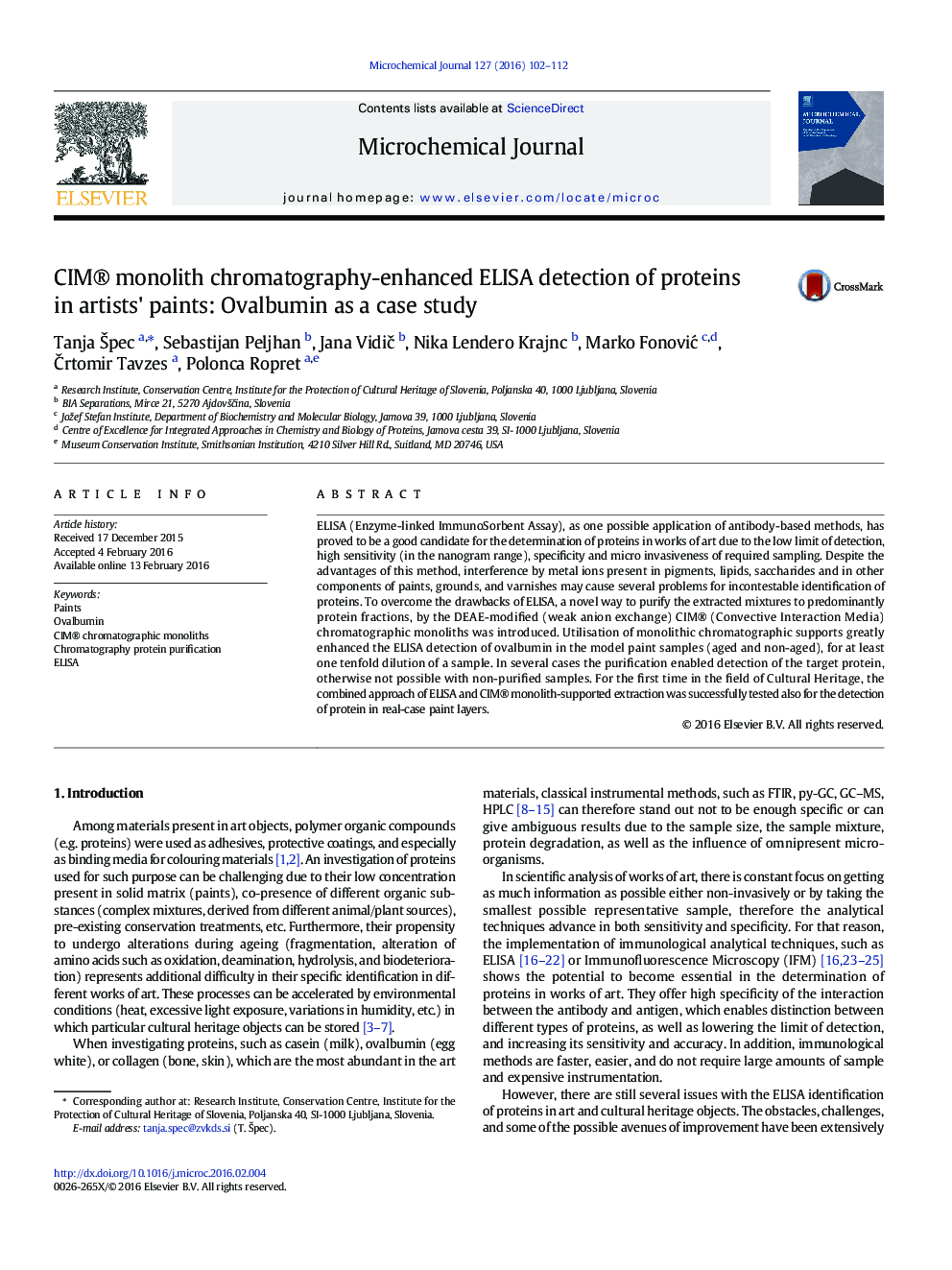| Article ID | Journal | Published Year | Pages | File Type |
|---|---|---|---|---|
| 1227506 | Microchemical Journal | 2016 | 11 Pages |
•Implementation of CIM ® chromatographic monoliths for the purification of paint samples to predominantly protein fractions•Improvement of ovalbumin detection in paints by combination of CIM chromatographic monoliths and ELISA•Successful validation of the joint CIM® monolith chromatography/ELISA approach by testing samples from real works of art
ELISA (Enzyme-linked ImmunoSorbent Assay), as one possible application of antibody-based methods, has proved to be a good candidate for the determination of proteins in works of art due to the low limit of detection, high sensitivity (in the nanogram range), specificity and micro invasiveness of required sampling. Despite the advantages of this method, interference by metal ions present in pigments, lipids, saccharides and in other components of paints, grounds, and varnishes may cause several problems for incontestable identification of proteins. To overcome the drawbacks of ELISA, a novel way to purify the extracted mixtures to predominantly protein fractions, by the DEAE-modified (weak anion exchange) CIM® (Convective Interaction Media) chromatographic monoliths was introduced. Utilisation of monolithic chromatographic supports greatly enhanced the ELISA detection of ovalbumin in the model paint samples (aged and non-aged), for at least one tenfold dilution of a sample. In several cases the purification enabled detection of the target protein, otherwise not possible with non-purified samples. For the first time in the field of Cultural Heritage, the combined approach of ELISA and CIM® monolith-supported extraction was successfully tested also for the detection of protein in real-case paint layers.
